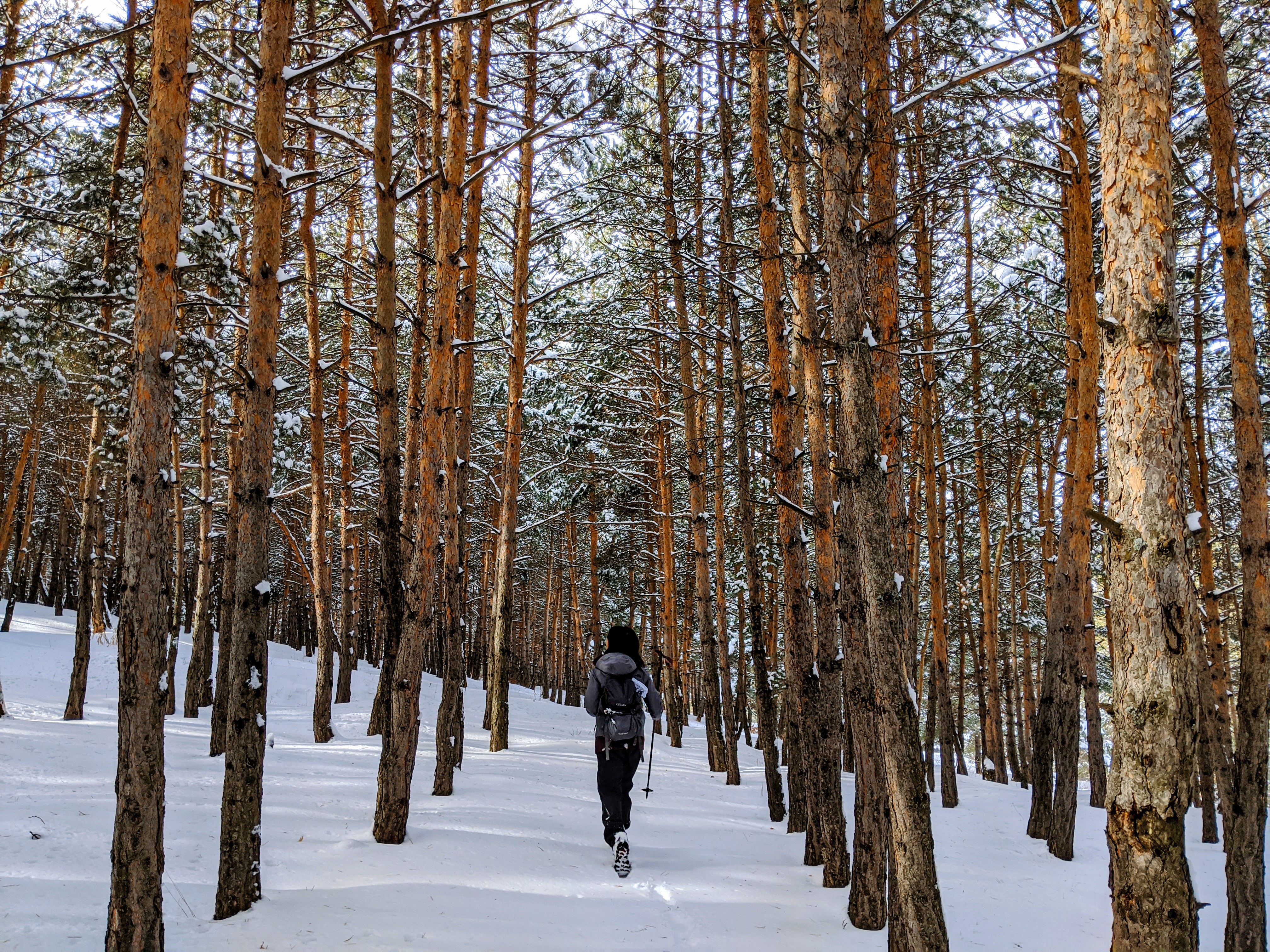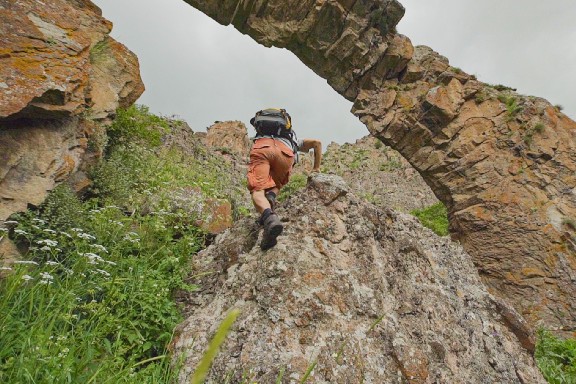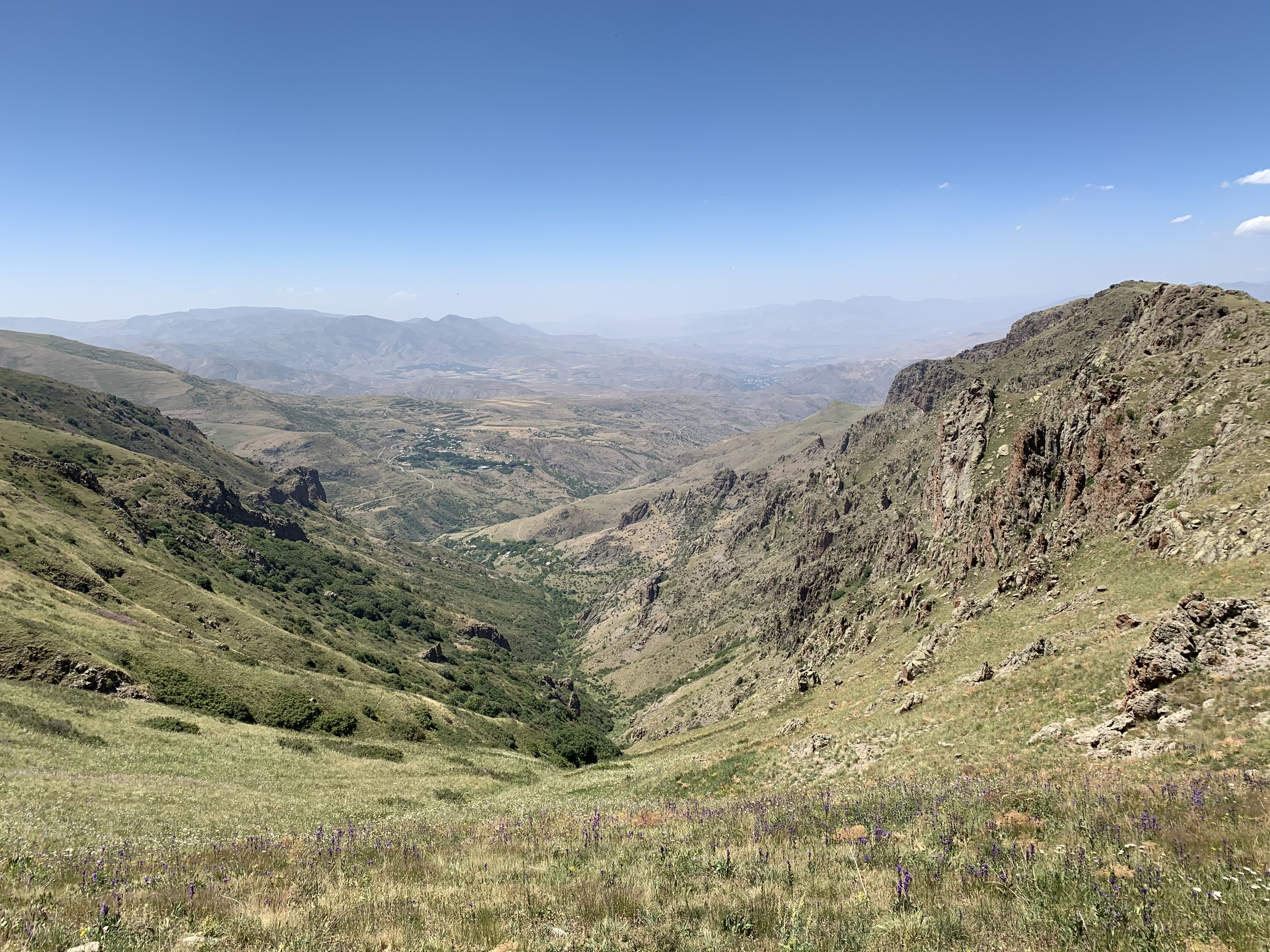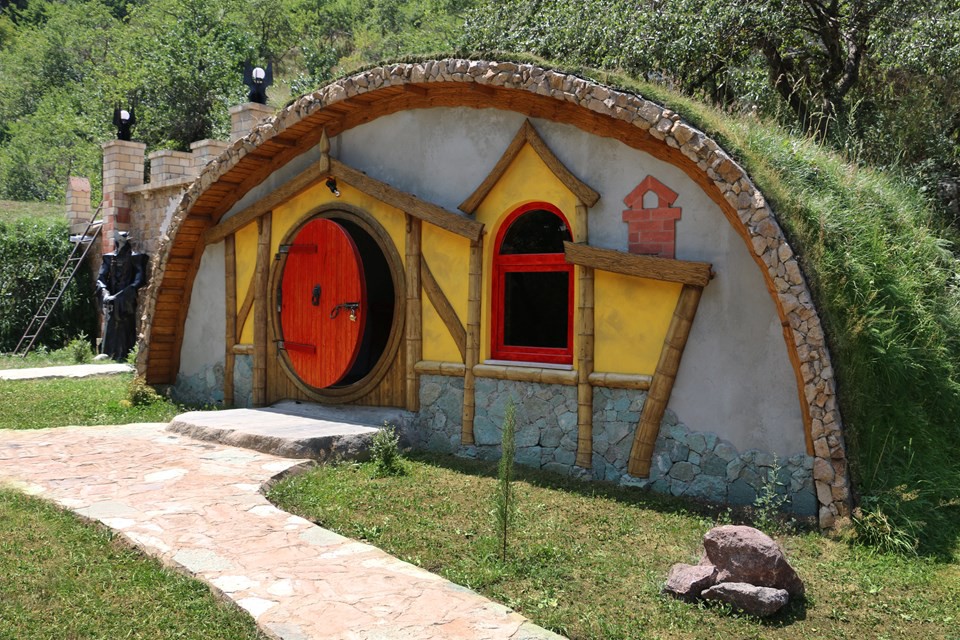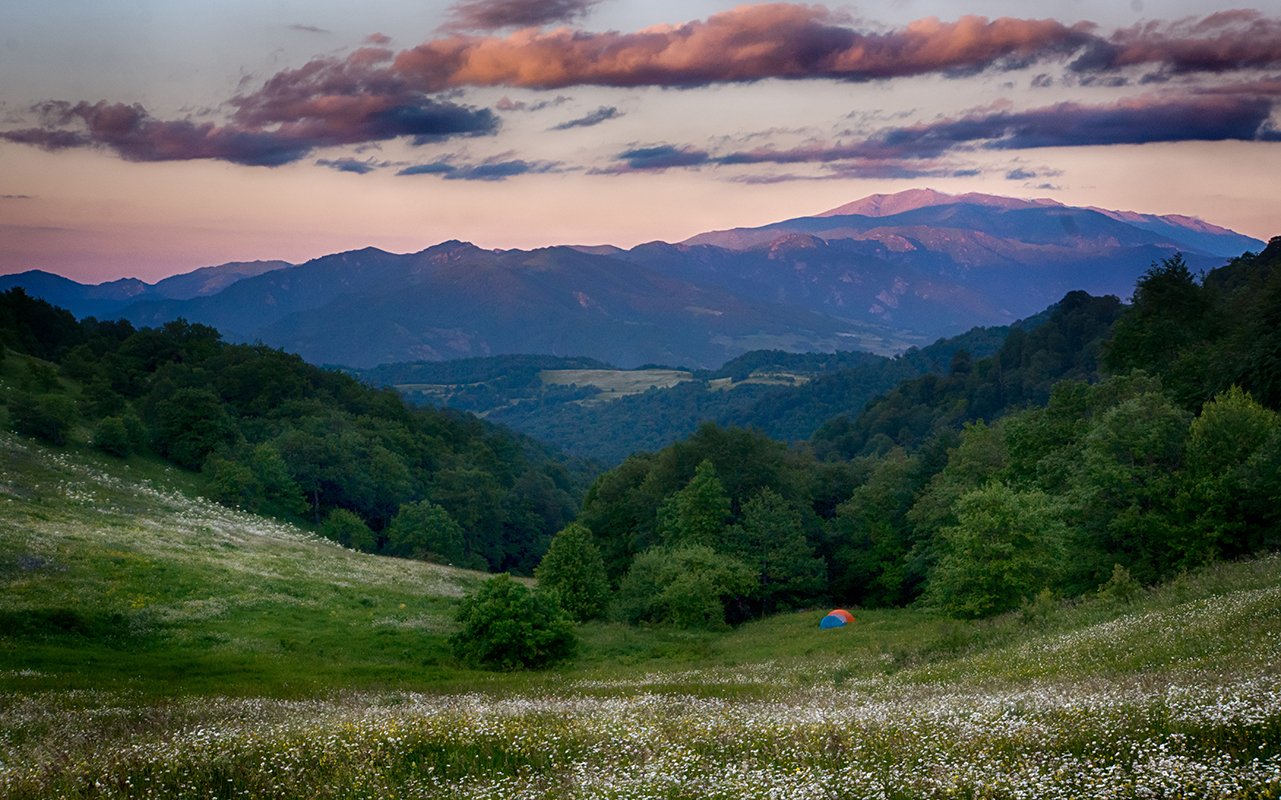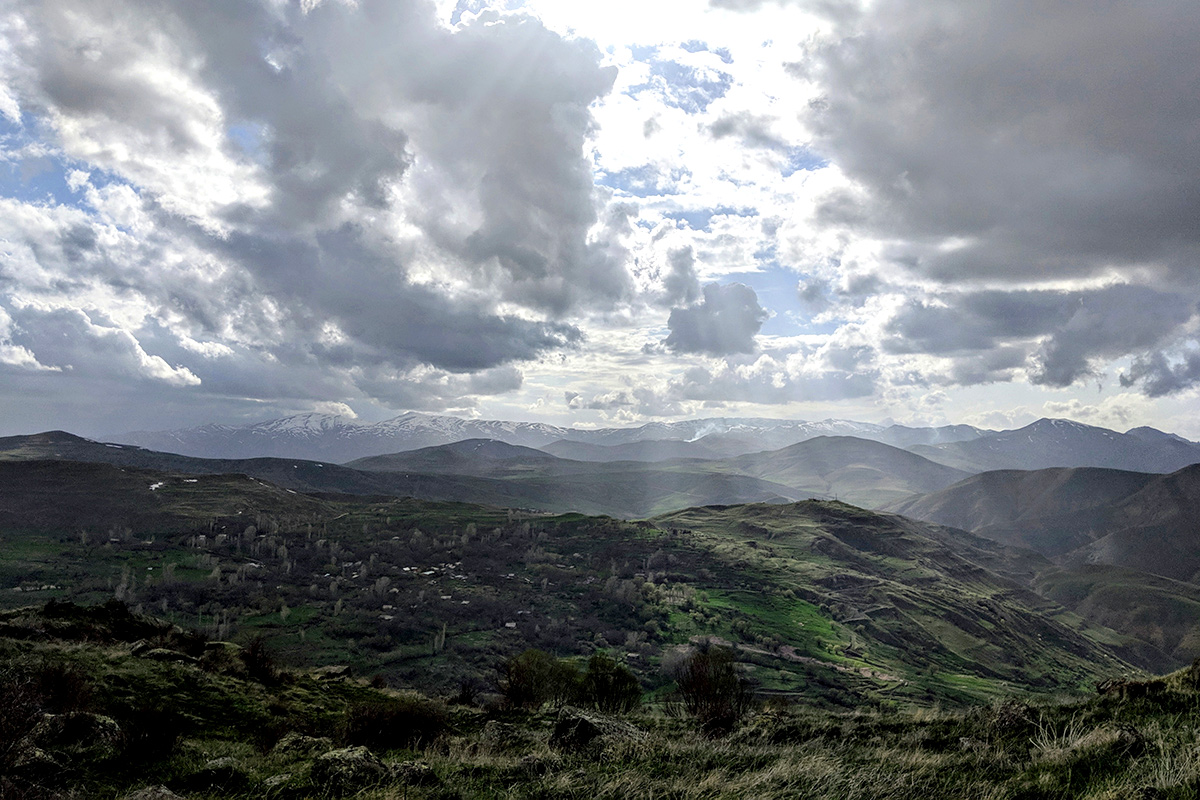You can find snakes on hiking trails the world over. But what are the right steps to take if you encounter one? What should you do if you’re bitten? We have all the answers to your questions.
We get asked a lot about wild animals in Armenia. How likely are you to encounter them? Should you be worried about your safety? Wild animals typically stay away from humans, so, no, there isn’t much cause for concern, though we always encourage hikers to practice caution and show our four-legged friends respect.
Don’t freak out. You can find snakes on hiking trails the world over. But what are the right steps to take if you do encounter one? What should you do if you’re bitten? We sat down with Artyom Makaryan, coordinator of animal care at the Yerevan Zoo, for some answers.
Snakes in Armenia: What, When, and Where
Armenia is home to 22 different types of snakes, of which 4 are poisonous. They are the Blunt Nosed Viper (known locally as gyurza), the Armenian viper or Radde’s Mountain Viper (haykakan izh), the Armenian Steppe Viper (Yerevanyan-tapastanayin izh) and Darevsky’s Viper (darevsku izh).
Snakes are most dangerous in the spring, specifically between the months of April and May, when they come out of hibernation and are looking for mates. It’s not uncommon to find snakes between April and May spread out in open areas, sometimes even on roads, taking in the sunlight. These are the months when hikers need to be particularly careful, Makaryan says. But by summertime, when temperatures can sore up to 40+ degrees (104°F) in Armenia, snakes hide underground during the day to avoid the heat, and come out at night. Unless you’re out at night in the summer, snakes are less of a danger to hikers in Armenia during tourist season.
Venomous snakes can be found throughout Armenia, though they’re sparse in mountainous forests, particularly in Armenia’s north. Makaryan says it’s rare, though not impossible, to find venomous snakes 2,500 meters above sea level. Not even urban centers like Yerevan are snake-free; the Armenian Steppe Viper can be found all around Yerevan not far from human population.
Should you be worried? Not if you keep reading!
Snake Bites and How To Avoid Them
The best thing to do for a snake bite? Avoid getting bitten altogether! Here are some very simple steps you can take to avoid a potentially deadly misadventure while hiking.
We get asked a lot about wild animals in Armenia. How likely are you to encounter them? Should you be worried about your safety? Wild animals typically stay away from humans, so, no, there isn’t much cause for concern, though we always encourage hikers to practice caution and show our four-legged friends respect.
Don’t freak out. You can find snakes on hiking trails the world over. But what are the right steps to take if you do encounter one? What should you do if you’re bitten? We sat down with Artyom Makaryan, coordinator of animal care at the Yerevan Zoo, for some answers.
Snakes in Armenia: What, When, and Where
Armenia is home to 22 different types of snakes, of which 4 are poisonous. They are the Blunt Nosed Viper (known locally as gyurza), the Armenian viper or Radde’s Mountain Viper (haykakan izh), the Armenian Steppe Viper (Yerevanyan-tapastanayin izh) and Darevsky’s Viper (darevsku izh).
Snakes are most dangerous in the spring, specifically between the months of April and May, when they come out of hibernation and are looking for mates. It’s not uncommon to find snakes between April and May spread out in open areas, sometimes even on roads, taking in the sunlight. These are the months when hikers need to be particularly careful, Makaryan says. But by summertime, when temperatures can sore up to 40+ degrees (104°F) in Armenia, snakes hide underground during the day to avoid the heat, and come out at night. Unless you’re out at night in the summer, snakes are less of a danger to hikers in Armenia during tourist season.
Venomous snakes can be found throughout Armenia, though they’re sparse in mountainous forests, particularly in Armenia’s north. Makaryan says it’s rare, though not impossible, to find venomous snakes 2,500 meters above sea level. Not even urban centers like Yerevan are snake-free; the Armenian Steppe Viper can be found all around Yerevan not far from human population.
Should you be worried? Not if you keep reading!
Snake Bites and How To Avoid Them
The best thing to do for a snake bite? Avoid getting bitten altogether! Here are some very simple steps you can take to avoid a potentially deadly misadventure while hiking.
.jpg?sfvrsn=aff9692_12)
- Wear long, heavy pants and hiking boots. If you are bitten by a snake, heavy pants and proper hiking boots will decrease the chances of a snake’s fangs reaching or breaking your skin.
- Stay on the trail, and avoid walking through heavy vegetation. You always want to see where you’re stepping. Diverging from trails is highly discouraged!
- If you see a snake, leave it alone. We can’t stress this enough! Snakes only strike if they feel threatened. If you do see a snake, stay away from it and let it do its thing. Snakes usually notice humans before we notice them, and will either slither away or make their presence known by hissing or making noise by raising a portion of their bodies off the ground and swinging around. If this happens, don’t panic and don’t go near the snake. Simply walk away or wait till it slithers off.
- Check for snakes before stopping to rest. It’s always smart to do a survey of an area before you sit down for a rest or lunch. Many hiking guides will carry sticks with them and use them to tap the ground, alerting any snakes that may have dozed off that there are humans around. Some may stomp the ground with their feet to scare snakes away. Like we said, snakes usually stay away from humans.
In the unlikely event that you are bitten by a snake, here’s what to do.
- Don’t panic and call 911 immediately. Panicking increases your heart rate, which increases blood circulation. If the snake that bit you is venomous, panicking will spread the venom throughout the body faster, not to mention make an already stressful situation worse. The best thing to do is stay calm and immediately dial 911 for assistance. Other emergency numbers: 103 for an ambulance, 102 for the police.
- Remember what the snake looks like. This will help medical professionals administer the right anti-venom. If you can, take a picture of the snake from a safe distance.
- Limit physical activity. Again, physical activity will increase your blood circulation and spread the venom inside your body faster. It’s recommended that the victim lay down, keeping the bite area elevated, though not above the heart. Emergency operators may instruct you to carry the victim back to the trailhead depending on where you are — stay in constant communication with 911 and follow their instructions.
- Don’t try to suck the venom out. Once venom is in your body, there’s little you can do to get it out. In fact, attempting to suck the venom can be dangerous. If the person attempting to suck the venom out of the victim’s body has a wound in their mouth, like a cold sore or a cut from flossing, they can get poisoned as well.
- Don’t try to cut the bite open, or apply a tourniquet. Unless you’re an experienced guide or medical professional, these techniques are not recommended for dealing with snake bites. Cutting the bite open to allow the venom to flow out of the body can result in accidentally cutting a vein, which can be deadly. Applying a tourniquet (like tying a belt above the bite area) can also be dangerous; you run the risk of cutting off circulation to the affected area, leaving deadly venom trapped in one part of the body, which can result in devastating tissue damage. The best thing to do is to wash the bite with water and soap, and apply a clean band aid until help arrives or you’re given specific instructions by emergency officials.
Ultimately, the most important thing to do while hiking is to always be alert, watch where you’re stepping, and if you do see a snake, stay away from it. Easy, right? Now, get back on the trails!







